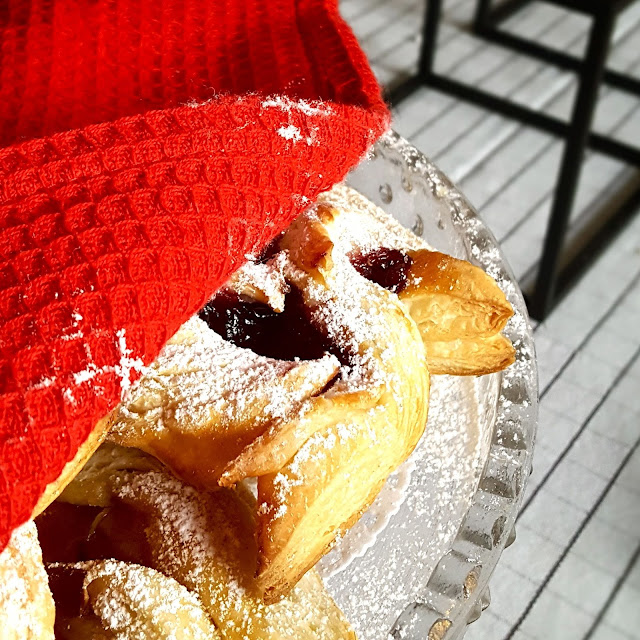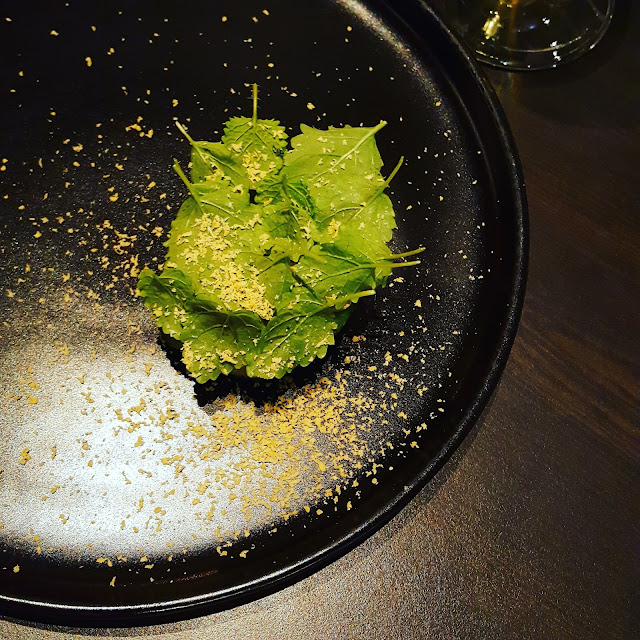Photo ⎮ kuva: Katja K.
ENG What a better place to celebrate Finland's centenary than with dear friends, in the middle of Helsinki, at Natura (Iso Roobertinkatu 11)!
The menu of clear, clean flavors is "built round Finnish small scale producers and local ingredients", say restaurateurs David and Anya. With a preferance on organic and Fairtrade (my kind of place!), the fish is of sustainable species and the meat comes from farms the restaurateurs know personally and where the animals' living conditions and diet are ideal.
"The milk was from a farm in Mikkeli, Finland, home to a cow called Ilusia and her calf Lorelei. How sweet is that?
While we were told that the capers accompanying the pike perch, served with brown butter and jerusalem artichoke, originated from David's mother's garden in Greece, I especially liked the story that came with my white mold cheese served with potato jam and ash rye bread: I learned that the milk was from a farm in Mikkeli, Finland, home to a cow called Ilusia and her calf Lorelei. How sweet is that?
And talking about wine, to go with my meal I enjoyed a delicious glass of Portuguese vinho verde, Aphros Ten (Loureiro, 2015), produced from certified biodynamic grapes.
Thanks for the invitation Rita, Kalle & Nea!
The interiors, mindful of both lighting and acoustics, is by Ateljé Sotamaa. – And what a gorgeous crowd!
FIN Mikä voisikaan olla parempi paikka juhlia satavuotiasta Suomea kuin ystävien kanssa keskellä Helsinkiä,
Naturassa (Iso Roobertinkatu 11)!
Menun selkeiden ja puhtaiden makujen kulmakiviä ovat suomalaiset pientuottajat ja paikalliset ainesosat, sanovat ravintoloitsijat David ja Anya. He suosivat luomua ja Reilun kaupan tuotteita (ravintola minun makuuni!). Kalat ovat kestävän kehityksen mukaisia lajikkeita, ja liha tulee maatiloilta, jotka ravintolan omistajat tuntevat henkilökohtaisesti ja joissa kotieläinten elinolosuhteet ja ruokavalio ovat ihanteellisia.
Me kuulimme ruokailun lomassa, että kuha-annoksen, joka tarjoiltiin ruskean voin ja maa-artisokan kera, kaprikset olivat lähtöisin Davidin äidin puutarhasta Kreikasta, ja minä pidin erityisestä tarinasta, joka saatteli perunahillon ja hiilinäkkileivän kera tarjoiltua valkohomejuustoa: maito oli mikkeliläiseltä maatilalta, jolla asustavat Ilusia-lehmä ja hänen vasikkansa Lorelei. Eikö olekin suloista?
Ja
viinistä puheen ollen, nautin aterialla herkullinen lasillisen portugalilaista vinho verdeä, Aphros Ten (Loureiro, 2015), joka on valmistettu sertifioiduista biodynaamisista rypäleistä.
Kiitos kutsusta Rita, Kalle & Nea!
It's all in the detail.
Delightful plates from the selection of "cuisine en miniature": Roasted avocado with almonds (above), and Pike kohlrabi, malt and buttermilk (below).
Love (my mother & motherland), Katja K.















